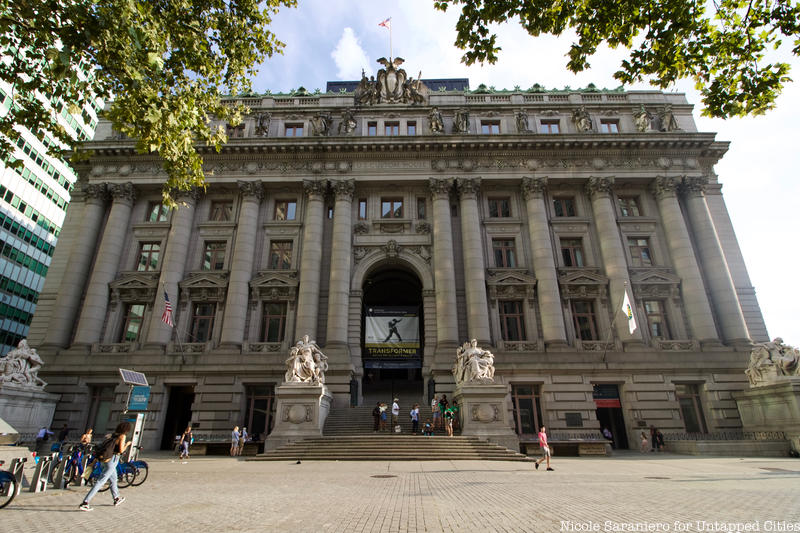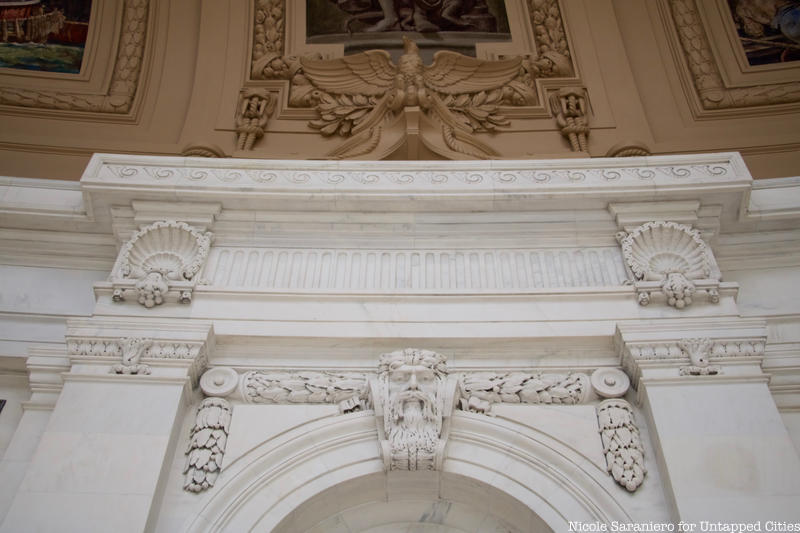9. The Selection of Architect Cass Gilbert was Controversial

The selection of Minnesota architect Cass Gilbert as the architect for the Custom House was one embroiled in politics. The Tarsney Act of 1893 granted the secretary of the treasury of the U.S. the ability to use private architects to design federal buildings. In 1899, twenty firms were invited to compete for the U.S. Custom House commission. This was the first major competition under the new act and the Custom House would be the fourth federal building completed after its implementation. Each architecture firm that entered had from June until September to come up with a proposal and could suggest two jurors for the panel that would judge their designs. Both of Cass Gilbert’s suggestions were approved and Supervising Architect of the Treasury, James Knox Taylor, who was also on the jury, was Gilbert’s former partner in St. Paul, Minnesota.
The competition ended in a draw between Gilbert’s grandiose Beaux-Arts design and a proposal by Carrere & Hastings, the firm that had just been granted the commission for the New York Public Library. Gilbert refused to hear any suggestion of collaboration and after two days of private meetings among the jurors, he was selected as the winner — much to the chagrin of the New York based architects who were resentful of this newly arrived westerner. Many argued that Knox and Gilbert’s relationship influenced the decision and some members of the Republican state machine even went so far as to take their grievances to President McKinley! In the end, Treasury Secretary Lyman J. Gage affirmed Gilbert’s selection.

The museum is 450,000 square feet large and covers three blocks. The two themes that Gilbert carried throughout the design, as an homage to the purpose of the building, were government and seafaring. Federal iconography such as eagles can be spotted throughout the intricate detailing, as well as tons of nautical imagery from dolphin-shaped door handles to seashells and the face of Poseidon.
Cass Gilbert made a sizable impact on the built environment of New York City however, designing such landmarks as the Woolworth Building, the Thurgood Marshall Courthouse, the Brooklyn Army Terminal and more.





